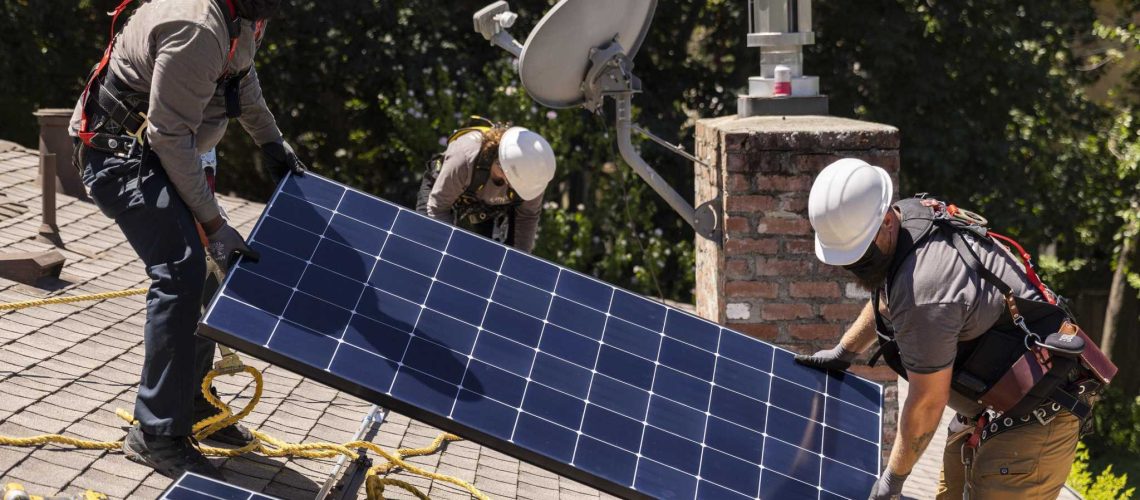Despite the hurricanes that recently devastated communities from San Juan, Puerto Rico, to Tampa, Fla., homeowners with solar panels and batteries overwhelmingly reported no disruptions to their electricity. Meanwhile, in south San Jose, residents have suffered through power outages 10 times in the past two months.
While California residents and businesses may be leading the nation toward a clean energy future, our state regulations reinforce dependence on the same antiquated and unreliable grid to deliver that energy.
It’s costing ratepayers a fortune.
Californians have watched their electricity bills rise at accelerating rates in recent decades, despite renewable energy generation costs declining 70% over the prior decade.
Why? The cost to distribute that electricity has ballooned. The pain will only worsen in the coming years, as major capital investments in transmission infrastructure, including long-overdue wildfire mitigation and safety maintenance, are put on the backs of ratepayers.
A cheaper and more reliable solution exists: help Californians generate and store energy locally. “Distributed energy resources,” such as rooftop solar and residential battery storage, reduce strain on the grid and improve reliability for all users.
Unfortunately, California’s monopoly utilities and their powerful friends stand in the way.
The California Public Utilities Commission just proposed a Net Energy Metering policy that will make it much more expensive for homeowners to install rooftop solar and store their electricity at home. While an improvement over an earlier proposal that imposed new taxes on solar owners, the latest proposal will delay the average payback period for homeowners’ investments in rooftop solar from six years to nine years. This will lead to fewer new solar installations on California rooftops — in part by reducing what homeowners earn for returning their excess electricity to the grid.
The proposed rules will allow investor-owned utilities like Pacific Gas & Electric Co. to sell electricity for roughly four times the price that a homeowner can sell the same electricity.
Why do the big utilities seek to discourage Californians from going solar? Money.
Blocking rooftop solar and residential battery systems prop up their expensive, 19th century alternative: importing electricity over long-distance transmission lines. Regulators guarantee investor-owned utilities a 12% annual return on capital spending to install and upgrade those transmission lines.
For example, PG&E announced a seemingly noble ambition to underground 10,000 miles of distribution and transmission lines, yet it will cost ratepayers $40 billion and entitle the utility’s investors to another $50 billion in guaranteed profit thereafter. Operations and maintenance will extract tens of billions more. The Public Utilities Commission admits that “every dollar (invested in transmission assets) costs ratepayers in excess of $3.50 over the life of a transmission asset.”
That explains why ratepayer advocates like The Utility Reform Network criticize PG&E’s undergrounding plan. And if you hope that PG&E’s undergrounding will save us from the next wildfire season, think again: PG&E will underground only 175 miles this year — none of which will involve high-risk transmission lines. At that rate, PG&E will complete its undergrounding project in about six decades, if there are any forests left to save.
Utilities justify paying homeowners 25 cents on the dollar for their electricity by asserting — with the support of regulators — that current rules shift transmission and distribution costs to lower-income ratepayers that can’t afford solar panels. Yet a strategy to expand solar access can dramatically reduce costs to all consumers, particularly as local energy storage reduces our dependence on transmission infrastructure. Moreover, many other mechanisms can ensure the fairness of utility costs — such as the 30% discount that low-income households can receive on their utility bills through the state’s CARE program.
The benefits of solar panels and storage have also become much more accessible to low-income renters, particularly with the help of state rebates and recent federal legislation for multifamily housing. If costly transmission upgrades constitute a necessary public good, then the state should issue bonds and own those assets publicly rather than enabling utility investors to enrich themselves while creating financial barriers to rooftop solar adoption for the rest of us.
The Public Utilities Commission could vote on the proposed decision as early as Dec. 15. Before then, let Gov. Gavin Newsom and the commission know that electricity regulations should favor consumers, not criminally convicted utilities and their shareholders. Local solar generation and battery microgrids provide a cheaper and more resilient source of energy for most buildings and are a crucial element of the clean energy transition that California has long committed to. As global leaders gather this week at COP27 climate conference to forge a more sustainable path for our planet, let’s not backtrack on California’s climate progress and leadership.
Sam Liccardo is the mayor of San Jose. Barry Cinnamon is the CEO of Cinnamon Energy Systems. Craig Lewis is the executive director of the Clean Coalition.



